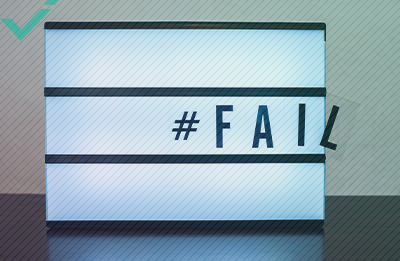The mere mention of marketing e-mails is, unfortunately, enough to incite dread in e-mail users the world over. It often carries connotations of the constant bombardment of messages from companies trying to entice consumers to buy their products. Even if the e-mails are not landing daily, they can often be poorly composed, incorrectly formatted, or untailored to the individuals receiving them.
MARKETING E-MAILS HAVE BECOME COMMON PRACTICE
The internet has unlocked a fountain of knowledge. However, many companies see this thirst for information as the green light to e-mail sign-ups. Buying a product or taking an interest in a company is very different from that consumer agreeing to hear from you on a daily basis. As such, many companies see their subscription listings drop dramatically, but are unaware of what they are doing wrong. Given that users can often feel overloaded with information, every company is trying to grab their customer’s attention by any means necessary. The most obvious and direct route is via their inbox. Some simple yet highly effective adaptations should be undertaken if your company’s subscription numbers are not doing as well as you hoped. Even if all of these tips are implemented, success is not guaranteed. The mantra must always be, “What does the customer want?”, not “What does our company want?”.

1: LESS IS MORE
The most integral action to review: how often do your customers receive e-mails from you? Daily, weekly, or monthly? If the answer is daily, then 26% of the users unsubscribing from your e-mails are likely doing so because of the frequency. A survey undertaken in 2016 by MarketingSherpa found the rate of e-mails received to be the number one reason that customers unsubscribed. Furthermore, when looking at companies specifically, 19% of users claimed that if any one business contacts them too often, this will cause them to unsubscribe.
If daily is too much, what is the right amount of contact? In the same year, further statistics released by MarketingSherpa showed that at least weekly was the overall preference, with 60% of participants preferring this option. In stark contrast, only 15% wanted to receive e-mails daily. Less is most definitely more. Starting with a weekly e-mail, monitor the subscription rates until you find that sweet spot for your client base.
2: UNDERSTAND YOUR CUSTOMER
It may come as no surprise that the second most popular reason for unsubscriptions was “The e-mails are not relevant to me”. As the life of your company changes, so will that of your customers. Just because a customer signed up to receive e-mails three years ago doesn’t mean they’re still interested. By observing click-through rates, companies can tailor their e-mails to give customers more of what they currently want. It can be all too easy to achieve an e-mail sign-up and assume the work is done. Regular assessment of your customer base and their needs is vital to prevent unsubscription numbers from creeping up. Only send customers sales announcements relevant to them if increasing sales is your company’s goal.

3: IT ISN’T ALWAYS ABOUT THE HARD SELL
In virtually every free space is a poster, banner, mug, or billboard all trying to do one thing—sell. We see adverts so often that many of us have become desensitised. How often do you see an ad on TV for an end-of-season sale that never seems to end? The same can be said for e-mails. Many companies will send out infographic e-mails for practically every deal they have. If I didn’t buy something the first time around, I’m probably not going to now; and if I did, it’s unlikely I’ll need another item from the same sale. The best way to avoid sales fatigue is to vary content. Make every other monthly e-mail an update about your business or exciting developments in that consumer field. Then, when you do have a particular line to push, the impact is significantly higher. It is all about generating excitement within your consumers. E-mails should have a tone that resonates with your company values.
4: OFFER A CHOICE
Tying nicely into tip number 2, some customers may be in the 15% of users that want e-mails daily, while others will fall into the monthly frequency category. Offering your customers a choice is a way to empower them, while still retaining their interest. They get to choose how often they hear from you. If this isn’t an option when signing up for subscriptions, it can be a valuable incentive when users go to hit that unsubscribe button. Prompt a survey to ask them why they are unsubscribing, and see if the option to change the frequency of contact keeps them on your mailing list.
5: FORMAT FOR ALL DEVICES
Unsurprisingly, over 50% of e-mails are opened on mobile devices. If your marketing e-mail is picture-heavy, does it load effectively on a mobile device? You have seconds to capture a customer’s attention; if those valuable seconds are spent waiting for the e-mail to load, then expect your unsubscriptions to increase dramatically. E-mail tools like Litmus allow you to see how your e-mail appears on multiple devices—an essential tool to make sure all audiences have a chance to view your content. All e-mails should be formatted appropriately, with coherent layouts and no typos. Many companies will invest heavily in making sure blog articles are correctly edited. The same rule applies to e-mails. Customers are bound to be more critical of professional e-mails, and as such, quality content is of the utmost importance.


